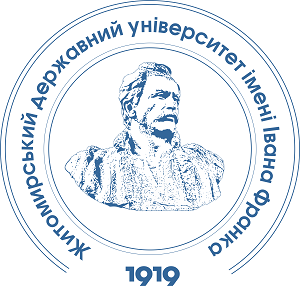METHODOLOGICAL AND PROCEDURAL FOUNDATIONS OF FOREST MONITORING IN UKRAINE
DOI:
https://doi.org/10.32782/naturaljournal.13.2025.37Keywords:
forest monitoring, ICP Forests, defoliation, forest condition indicators, forest ecosystems, forestry, large-scale monitoring, environmental reporting, sustainable forest developmentAbstract
The analysis of the evolution of the forest monitoring system in Ukraine reveals a prolonged and ambiguous process of forming the institutional, methodological, and organizational framework, which unfolded amid the complex socio-economic development of the state. Since the 1990s, Ukraine has gradually adapted its national approaches to forest condition monitoring in accordance with European environmental standards and methodologies. A crucial role in this process was played by Ukraine's participation in the International Cooperative Programme on Assessment and Monitoring of Air Pollution Effects on Forests (UNECE ICP Forests), which became a key reference point in the development of the ecological monitoring system for forest ecosystems.In the initial stages of the program's implementation, there was active involvement of domestic research institutions, particularly institutes of the National Academy of Sciences of Ukraine and specialized universities, in the creation of a national network of permanent monitoring plots. Later, as the program expanded, production structures also became actively involved in the monitoring process, including the State Forest Inventory Association "Ukrderzhlisproekt", state forestry enterprises, and regional departments of forestry and hunting management.However, the monitoring of critically important environmental parameters remained particularly vulnerable, especially the chemical composition of atmospheric air, soil contamination by toxic metals, soil acidity, and the physico-chemical characteristics of soil water. These indicators were largely neglected due to a lack of necessaryresources, which reduced the representativeness, scientific reliability, and comparability of Ukraine’s data withthat of other European countries.At the national level, this has resulted in the loss of capacity to promptly respond to challenges such as forest degradation, declining biodiversity, the impacts of industrial pollution, and changing climate conditions. At the international level, it has led to violations of Ukraine’s obligations under frameworks such as the Convention on Long-range Transboundary Air Pollution, a decline in trust in Ukraine as an environmental partner, and the loss of opportunities to participate in international nature conservation and climate finance initiatives.Therefore, the restoration and modernization of Ukraine's forest monitoring system must become a priority of environmental policy. This requires political will, integration of domestic scientific potential, international technical assistance, and the establishment of a stable financial base to ensure continuous monitoring. Only under these conditions will Ukraine be able to return to active participation in European environmental initiatives and ensure an appropriate level of protection for its forest ecosystems.
References
Букша І.Ф., Букша М.І., Пивовар Т.С. Оцінка репрезентативності даних моніторингу лісів України за різної щільності мережі ділянок спостережень. Лісівництво і агролісомеліорація. 2019. Вип. 134. С. 66–77.
Букша І.Ф., Пастернак В.П., Пивовар Т.С., Букша М.І., Яроцький В.Ю. Методичні матеріали щодо проведення моніторингу лісів І рівня та забезпечення його якості. Харків : УкрНДІЛГА, 2011. 40 с.
Грибан С., Заєць С. Система автоматизованого моніторингу лісових угідь. Measuring and computing devices in technological processes. 2025. № 82(2). С. 45–50.
Кравець П.В. Методичні підходи щодо формування системи критеріїв та індикаторів сталого управління лісами в Україні. Науковий вісник УкрДЛТУ. 2003. Вип. 13.3. С. 283. [Електронний ресурс] URL: http://archive.nbuv.gov.ua/portal/chem_biol/nvnltu/13_3/283_Krawec_13_3.pdf (дата звернення: 29.06.2025).
Павліщук О.П. Особливості формування системи критеріїв та індикаторів для оцінки сталого розвитку лісового господарства України. Науковий вісник НЛТУ України. 2005. Вип. 15.7. С. 103–109.
Пузріна Н.В., Мєшкова В.Л., Миронюк В.В., Бондар А.О., Токарєва О.В., Бойко Г.О. Моніторинг шкідливих організмів лісових екосистем: навчальний посібник. Київ : НУБіП України, 2021. 274 с.
Шершун М.Х. Стратегія, критерії та індикатори збалансованого ведення лісового господарства: еколого-економічні та нормативно-правові шляхи їх реалізації. Науковий вісник НЛТУ України. 2012. Вип. 22.14. С. 99–105. [Електронний ресурс] URL: http://archive.nbuv.gov.ua/portal/chem_biol/nvnltu/22_14/99_Szer.pdf (дата звернення: 29.06.2025).
Bondar A., Pankova S., Razanova A., Kutsenko M. The condition and prospects for the restoration of protective forest belts in the Vinnytsia region under conditions of increasing climate risks. Сільське господарство та лісівництво. 2025. № 2 (37). С. 100–108. https://doi.org/10.37128/2707-5826-2025-2-10.
Eichhorn J., Roskams P., Potočić N., Timmermann V., Ferretti M., Mues V., Szepesi A., Durrant D., Seletković I., Schröck H.W., Nevalainen S., Bussotti F., Garcia P., Wulff S. Part IV: Visual Assessment of Crown Condition and Damaging Agents. In: UNECE ICP Forests Programme Coordinating Centre (ed.). Manual on methods and criteria for harmonized sampling, assessment, monitoring and analysis of the effects of air pollution on forests. Eberswalde, Germany : Thünen Institute of Forest Ecosystems, 2016. 49 p. Annex. [Електронний ресурс] URL: http://www.icp- forests.org/manual.htm (дата звернення: 29.06.2025).
Harrington F., Neville P., Cummins T., Farrell T. A new vision of forest monitoring in Ireland and Europe. The FutMon project. Environment. 2010. No. 12. COFORD. [Електронний ресурс] URL: http://www.agriculture.ie/media/migration/forestry/environmentalinformation/futmon/CofordConnectFeatureonFutMon.pdf (дата звернення: 29.06.2025).
Pankova S. O., Kutsenko M. I. Assessment of the current ecological state of forest shelterbelt ecosystems in the Right-Bank Forest-Steppe. Таврійський науковий вісник. Серія: Сільськогосподарські науки. 2025. Ч. 2. № 142. С. 43–49. https://doi.org10.32782/2226-0099.2025.142.2.6.
Potter K.M., Conkling B.L. (eds.). Forest health monitoring: national status, trends, and analysis 2019. Gen. Tech. Rep. SRS-250. Asheville, NC : U.S. Department of Agriculture, Forest Service, Southern Research Station, 2020. 189 p.
Sanders T.G.M., Michel A.K., Ferretti M. 30 years of monitoring the effects of long-range transboundary air pollution on forests in Europe and beyond. UNECE/ICP Forests, Eberswalde, 2016. 67 p. [Електронний ресурс] URL: http://icp-forests.net/page/icp-forests-executive-report (дата звернення: 29.06.2025).
Tallent-Halsell N.G. (ed.). Forest Health Monitoring, Field Methods Guide. EPA/620/R-94/027. Washington, D.C. : U.S. Environmental Protection Agency, 1994. 205 p.







